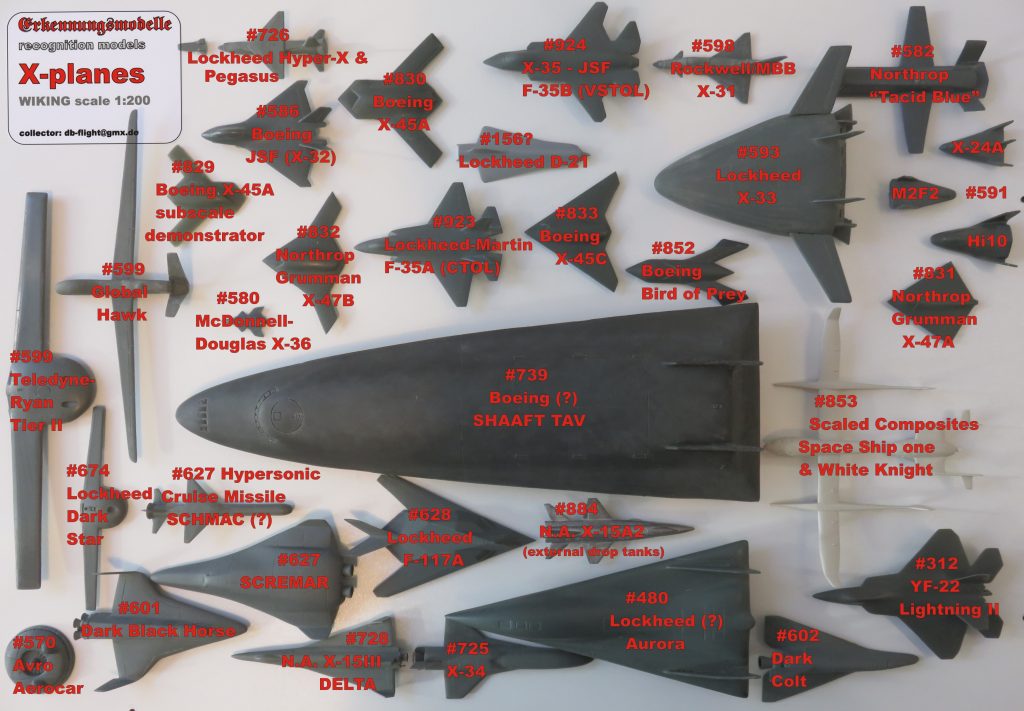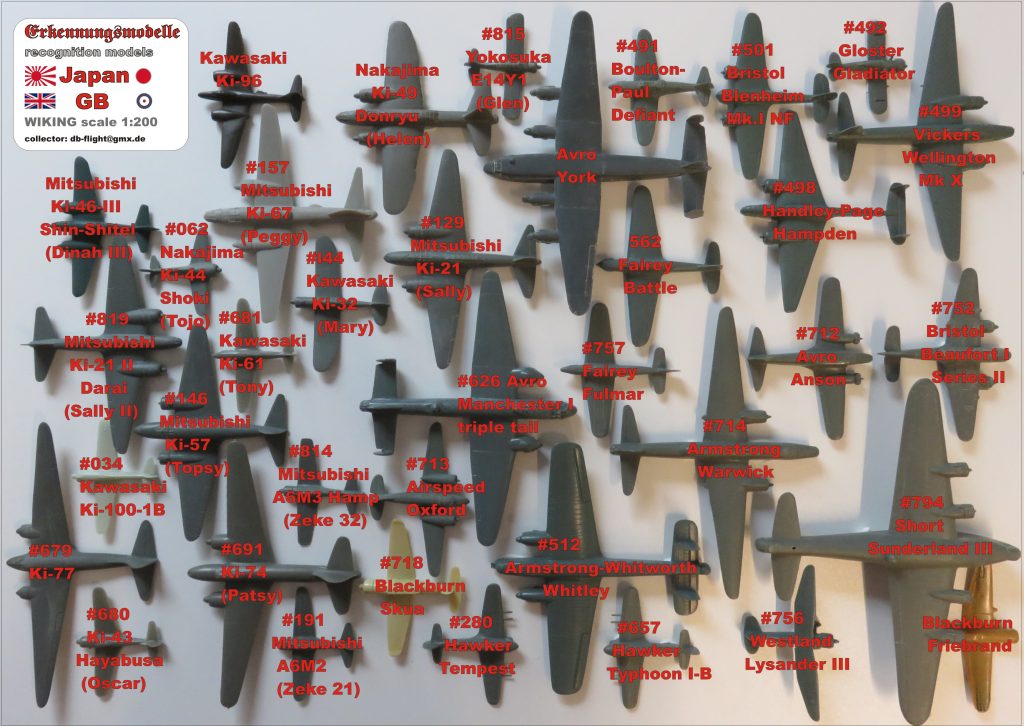Geschichte im Maßstab 200
Die Entstehungs- und Produktionsgeschichte deutscher ID-Modelle von Flugzeugen durch Herrn Pelzer unter seinem Label WIKING 1:200 ist sehr „rauh“.
Zunächst zu den Materialfarben: Kurz vor dem Zweiten Weltkrieg gab es eine sogenannte schwarze Modellserie – schwarze Farbe, als WIKING WM die RLM-Aufträge erhielt, begannen sie mit der Produktion großer Modelle in grün-grau, später in grau, hellgrau, basalt, aber auch in anderen grautönen. Alle Scheiben haben einen Ländercode und eine Nummer sowie das W/M-Logo für WIKING-Modell. Kurz nach dem zweiten Weltkrieg, während der Besetzung durch die alliierten Armeen, produzierten sie eine Reihe von Modellen in reinem Silber und fügten nach und nach verschiedene Farben in Metallic und sogar in den beeindruckenden Schattierungen von Jaio ist Orange und immer mehr hinzu. In den fünfziger Jahren entstand eine neue Modellserie (teils aus der Originalserie, teils neu) in Silber – made by plastic – namens „Silberlinge“ mit Globus und Ständer.
In den 80er und 90er Jahren fertigte der Privatmann Doktor Grope Originalmodelle aus den Originalformen nach der originalen Produktionsmethode – einer grünen Bierflaschenfarbe.
Was die Propellerspinner betrifft – die ersten waren aus dem gleichen Material wie die Modelle, manchmal zusammen mit ihnen gegossen, manchmal montiert, manchmal mit Wellen, manchmal auf Dornen montiert.
Später kamen die Propellerspinner aus Holz hinzu.
Material – Die Originalmodelle werden seit jeher durch Niederdruckpressen aus einem Duroplast hergestellt. daher klopft es, wenn es angetippt wird. Falsch und Kopien werden durch ein anderes Verfahren (mehrere verschiedene) mit Harz hergestellt und sind daher beim Klopfen taub.
History in 200 scale
The history of the creation and production of German ID models of aircraft by Mr. Pelzer under his label WIKING 1: 200 is very „rough“.
At first to the material colors: just before the Second World War there was a so-called black series of models – black color, the moment WIKING WM got the RLM orders, they started producing large models in green-gray, later in gray, light gray, basalt , but also in other shades of gray.
All panes have a Country code and a number plus the W/M-logo for WIKING-Model. Just after WWII, during the occupation by the Allied armies, they produced a number of models in pure silver and gradually added different colors in metallic and even in the impressive shades of jaio is orange and more and more.
In the fifties, a new series of models was created (some taken from the original series, some new) in silver – made by plasic – called „Silberlinge“ wich globus and stand.
In the 80’s and 90’s the private man Doctor Grope produced original models from the original molds by the original production method – a green beer bottle colour. As for the propeller cones – the first ones were made of the same material as the models, sometimes cast together with them, sometimes mounted, sometimes with shafts, sometimes mounted on thorns.
Later came the propeller cones made of wood. Material – the original models have always been produced by low pressure pressing from a thermoset. therefore, it taps when tapped. False and copies are made by another method (several different) with resin and are therefore deaf when tapped.
Written by Edwin Borremans in Facebook
SCALE AIRCRAFT ID/RECOGNITION MODELS
Additions by SIG 200
See also Facebook: Air Ministry AM Documents


